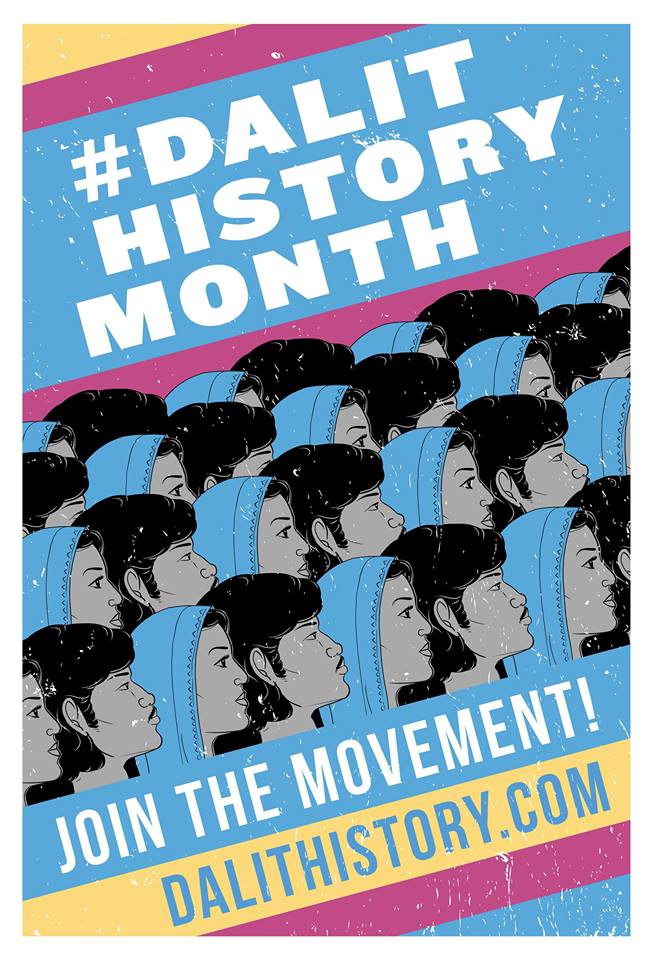Jay Prakash Faqir
 Historian Aditya Mukherjee in one of his essays has accused western historians like Eric Hobsbawm of being Eurocentric. He finds Hobsbawm’s characterization of the 20th century as an Age of Extremes to be an ill-informed opinion as far as Asia and the Asian perspective are concerned. And no doubt, his opinion holds ground. The problem however arises when he fails to similarly note the Brahmin-Savarna centrism of the history written by upper caste writers like him. He, along with his teacher Bipan Chandra, dismisses the Dalit movement as mere Identity Politics.
Historian Aditya Mukherjee in one of his essays has accused western historians like Eric Hobsbawm of being Eurocentric. He finds Hobsbawm’s characterization of the 20th century as an Age of Extremes to be an ill-informed opinion as far as Asia and the Asian perspective are concerned. And no doubt, his opinion holds ground. The problem however arises when he fails to similarly note the Brahmin-Savarna centrism of the history written by upper caste writers like him. He, along with his teacher Bipan Chandra, dismisses the Dalit movement as mere Identity Politics.
These historians/intellectuals reject any claim to the idea of nationhood that is different from their savarna imagination of the Indian Nation. The projection of their interests as the Indian Nation is no different from that of the RSS. The only difference is that these savarna ‘progressive’ historians seem to have the cunning to decorate their arguments in superficial language and show off some fake intellectualism. They rattle arguments of justice and equality against the British torture and oppression, yet when it comes to the concerns of women, Dalit Bahujan, Pasmanda Muslims, they hypocritically espouse those very same colonial imperialist ideas. For instance, while they strongly oppose how the British justified their rule on Indians on the basis of merit and racial superiority, they in turn employ the same colonialist and racist arguments to oppose the Mandal Commission and reservations using notions of ‘merit’ etc.
People like Andre Beteille and Bipan Chandra are the main proponents of such illogical arguments. To prevent the Dalit Bahujan from accessing rights based on equality and justice, they thrust their argument of Nationhood, which means that whatever takes place in the name of India and Bharat should be a privilege for the entire nation. Whereas, it has seen time and again that the Dalit Bahujan do not enjoy most rights that the savarnas do under this nationhood. The issue of justice and equality becomes a big political question when linked to preserve the savarna idea of India but the same issue in the context of Dalit Bahujan is deemed to be merely ‘social’ and hence ‘less important’. Therefore, it must be pushed aside for political expediency or be relegated as secondary.And in this way, a barrage of anti-Dalit logic is deployed to dismiss the struggle of the Dalit Bahujan against oppression – a political movement – as mere Identity Politics.
Just as the movement for independence of India was not considered a movement only for an Indian identity, but against imperialism, oppression, and discrimination. Similarly, the movement of Dalit Bahujan is against oppression and discrimination, and for political partnership.
To call the Dalit movement as an Identity-based movement is quite a contradiction in terms. The politics of identity is cultural wherein the cultural differences originating both historically and geographically play a major role. The differences, right from what one wears to the rituals associated with birth and death lead to the differences of identities. This is basically about details and not about ‘human essence’. That is why existentialism is connected to the idea of identity (existence precedes essence cf. J P Sartre), whereas the politics that focuses on ‘essence’ is augmented to Marxism.
That ‘essence’ is in fact the class based economy. In such a scenario, to simultaneously label the Dalit movement as both ‘essentialist’ and ‘identity’ based is not just cunning, but also foolish. The movement led by Dalit Bahujan, or any oppressed for that matter, is based on the ideals of justice and equality.
Identity is actually not the basis of any such movement against hegemony. This is the oppressor’s vocabulary thrust on the oppressed. It benefits the oppressor to label it as identity politics because by doing so it doesn’t remain a political question but is reduced to a cultural issue. And because cultural issues are not that pressing and are mere suffixes to a comprehensive liberation, hence they should be set aside. Dalit Bahujan thinkers and leaders like Ambedkar, Periyar, Lalai Yadav, Qaiyum Ansari, kept struggling against this savarna hegemony and managed to successfully bring the Dalit Bahujan question to the fore. And that is how the silent revolution post the 1990s could take place. Now, both the left and right wings of the savarna politics want to overturn this revolution. To achieve this end, the right wing savarnas have taken the support of religion whereas the left wing savarnas have taken refuge in an almost religion-like vulgar Marxism.
The assault of the right wing ideology on the interests of the Dalit Bahujan is somewhat less dangerous, for it depends on the opiate-like quality of religion and exploits the ignorance and illiteracy of the people. It can be fought against with modern education, to a certain extent. This ideology draws on the tools of tradition. It either tries to fool people, or entice them by fuelling human greed. But both these can’t be sustained for long in such a huge population. The Udit Rajs and Ram Vilas Paswans are few and far in between, and will remain so.
In contrast to this, the leftist savarna politics is a more powerful assault on the Dalit Bahujan. And as of now, this attack has a renewed vigour. The first phase of this attack came in the form of Bajrang Bihari Tiwari, Badri Narayan Tiwari, Abhay Kumar Dube etc. with an acute semblance to some orientalist project. Just as the orientalist colonizers studied the people in Asian societies as if they were studying lab specimen, in order to control them, the savarnas are invested in studying the Dalit communities in a very similar fashion. In several universities, there is a proliferation of Dalit Studies departments just like the opening of Asiatic Societies not a long time ago. These are the chelas and chamchas of the same Ashis Nandy who declared SC/STs to be ‘more corrupt’. Their ultimate aim is to subvert anti-caste thought that has resulted through the emergence of Dalit literature etc. by controlling and diluting it, just as Shankaracharya did with the entire episteme of Buddhist thought.

The ‘Brahmin’ researcher. Illustration by Nidhin Shobhana
With this aim, these foot soldiers of savarna interests, these writers and intellectuals invent hollow discourses like class vs. caste, or sympathy vs. experientiality which are just savarna-brahmin problematizations. Moreover, they even force Dalits to participate, to waste their precious time in all this and try to mislead them. While the right-wingers spout the question of ‘merit’ openly on the streets, the savarna leftists like Bipan Chandra work hard to establish this bogus merit principle as some sociological phenomenon. This is how he and his successors in the savarna left have been searching and inventing ways to deny leadership to the Dalit Bahujan. These people teach social scientists like Pierre Bourdieu, construct some metaphysical discussions around materialist thinkers like him but never use his theories on social capital to deconstruct concepts like merit. This definition of merit becomes the Delphi Goddess for the oppressor, wherein the proletariat is always meant to lose to the plebian. An apt example of this is to be found in the Civil Services examinations.
The paper on general studies for this exam is filled with Gandhi, Nehru, Tagore etc. A savarna has mostly grown up listening to adulation of these figures. Whereas, someone like me, belonging to a backward/lower caste (I prefer to say small caste), has grown up listening to Alha Udal and Pachra*. The kind of answers that get you marks in this exam are designed to match the world view and language of the savarna candidate, but for a Dalit Bahujan, these are like celebrating the enemies’ ideas and thoughts. This is how merit is constructed to ensure that only the savarna is deemed meritorious. It is like the idea of fair skin as beautiful renders the dark skinned as ugly. So, self-negation or erasure becomes the only condition for a lower caste candidate to be successful and meritorious in such a system. The more s/he erases his/her own identity to become more like a savarna, the more his or her chances at success in this savarna dominated society.
In this way, a constructed bias always works against someone from a lower caste. S/he is forced to behave like a savarna. S/he is forecefully taught Sanskrit in schools. A language once denied to the lower castes by maintaining total hegemony by Brahmins on the same, to be now forced on the former, is a classic example of oppressive savarna politics (historical opportunism)and the secret behind this so called merit.
That is why, the fight of the Dalit Bahujan isn’t just some identity politics but a fight against the hegemony of both the savarna left and right, a fight against the savarna domination and hence a fight for justice and equality.
*caste song of Paswan/Dusadh caste, now appropriated by Brahmin singers like Manoj Tiwari and Malini Awasthi
~
This essay was originally published in Hindi in the online portal www.hamrang.com and can be accessed here
(translated into English by Ankit Goti B Gautam and Akshay Pathak)
~~~
Jay Prakash Faqir is from Siwan, Bihar. He has published several essays, stories, poetry in Urdu, Hindi and English on subaltern issues. He is a central government official currently posted in Kolkata.










